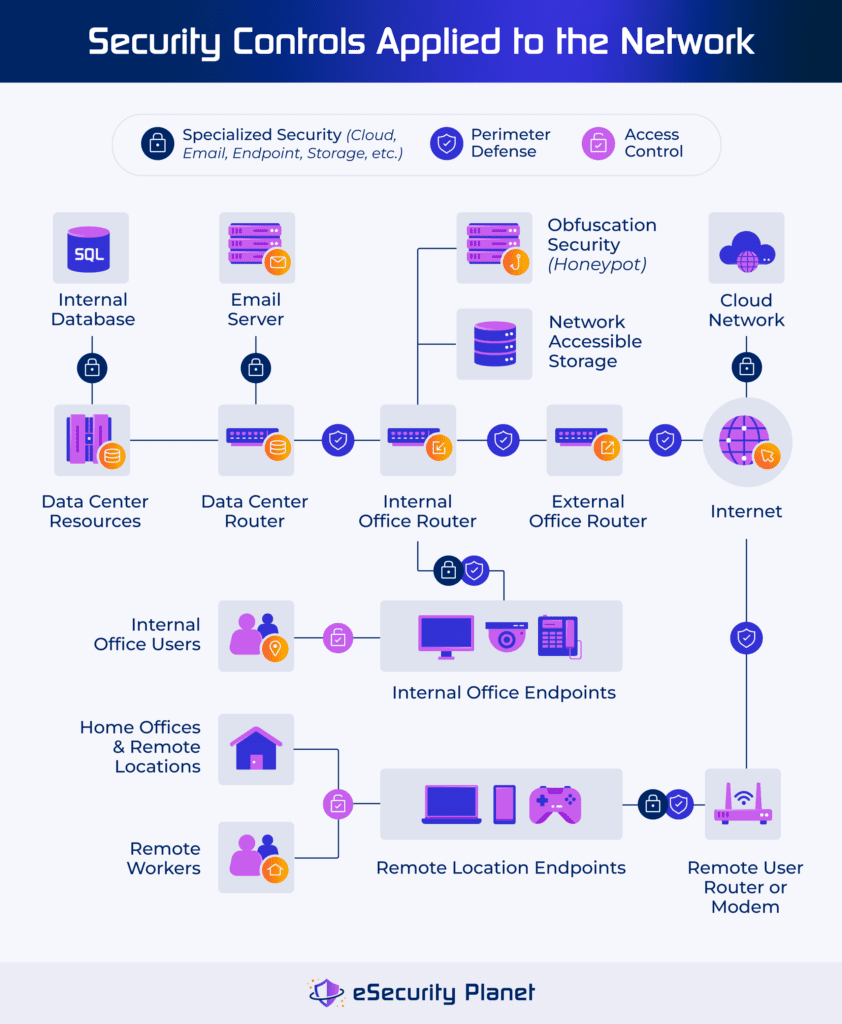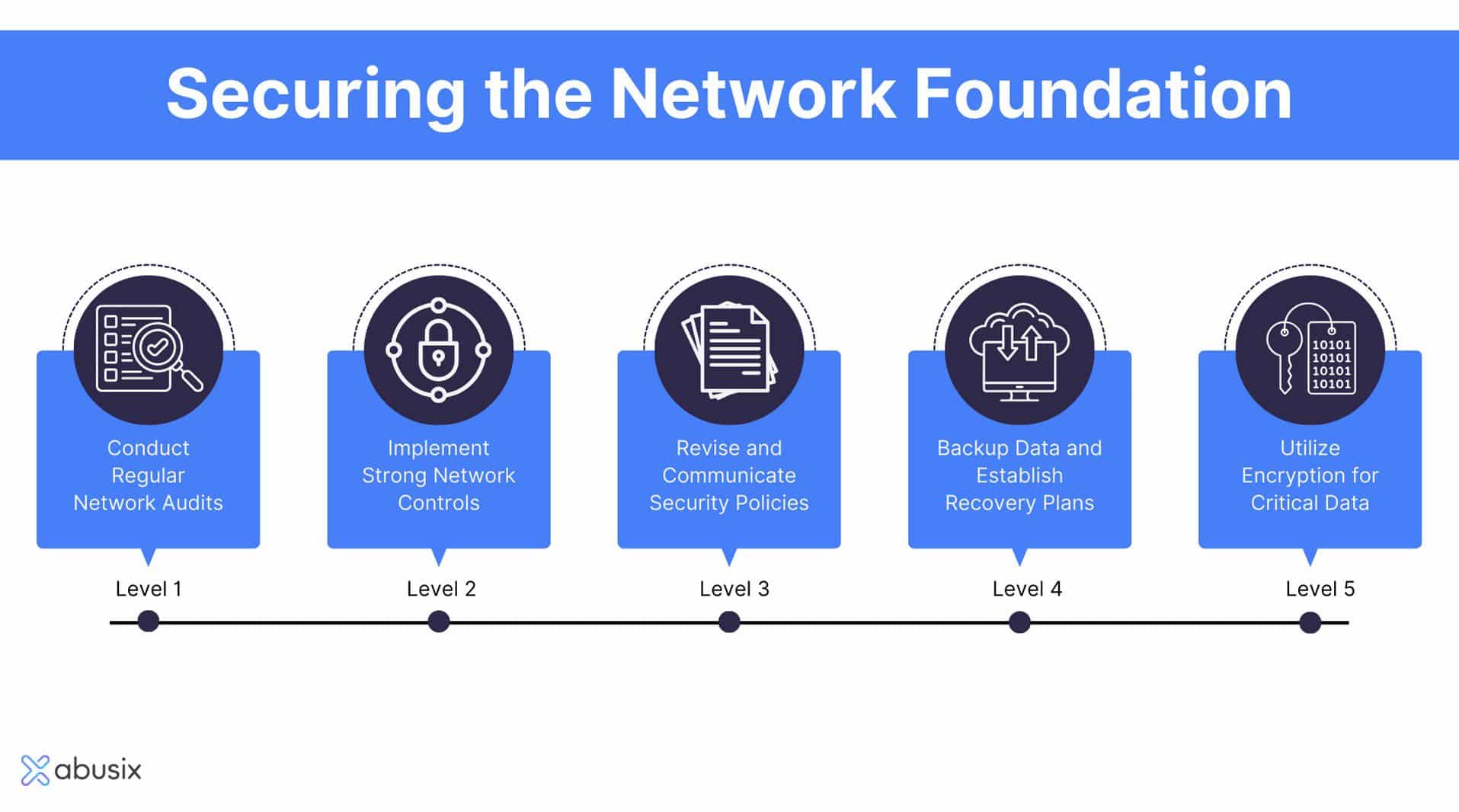The Important Function of Information and Network Safety And Security in Shielding Your Details
In an era where information breaches and cyber hazards are significantly widespread, the significance of robust data and network security can not be overemphasized. Organizations must not just protect delicate info however additionally make certain conformity with developing regulative requirements. The execution of reliable safety measures, such as security and access controls, is essential to preserving depend on and functional honesty. Nonetheless, the landscape of cyber risks is frequently shifting, elevating inquiries concerning the adequacy of present techniques and what brand-new approaches might be essential to remain ahead of prospective risks. What lies in advance in this complicated safety atmosphere?
Understanding Information Security
In today's electronic landscape, an overwhelming bulk of organizations come to grips with the complexities of information security. This important component of infotech includes protecting delicate information from unauthorized gain access to, corruption, or theft throughout its lifecycle. Data protection encompasses different strategies and innovations, consisting of encryption, gain access to controls, and information masking, all targeted at securing details versus breaches and susceptabilities.
A basic aspect of data protection is the identification and classification of data based upon its level of sensitivity and importance. This classification assists companies prioritize their security initiatives, designating sources to protect the most vital details effectively. Applying durable plans and treatments is essential to ensure that employees understand their role in maintaining data safety and security.
Regular audits and assessments aid in identifying potential weaknesses within a company's information protection structure. In addition, staff member training is essential, as human mistake stays a considerable consider data breaches. By fostering a society of protection recognition, companies can reduce risks related to expert hazards and neglect.
Value of Network Safety
Network safety and security stands as a cornerstone of a company's overall cybersecurity approach, with about 90% of organizations experiencing some form of cyber hazard in the last few years. The importance of network security exists in its capability to shield sensitive information and maintain the integrity of service procedures. By safeguarding network facilities, organizations can avoid unapproved access, data violations, and various other harmful activities that might endanger their properties and reputation.
Implementing robust network protection determines not just assists in mitigating risks yet additionally fosters trust fund among stakeholders and clients. When clients are ensured that their monetary and personal information is secure, they are most likely to involve with the organization, resulting in improved customer commitment and business development.
Additionally, a well-structured network protection structure assists in compliance with numerous governing requirements. Organizations should stick to industry requirements and lawful requireds concerning data defense, and effective network safety techniques can ensure compliance, consequently staying clear of potential penalties.

Typical Cyber Risks
Organizations must continue to be alert against a range of cyber threats that can threaten their network safety and security initiatives. Among one of the most typical hazards is malware, which includes viruses, worms, and ransomware that can interrupt operations, take information, or hold info captive. Phishing attacks, where destructive actors pose relied on entities to deceive people into exposing delicate info, proceed to grow in class, making user education critical.
One more widespread threat is dispersed denial-of-service (DDoS) strikes, which overload systems with traffic, making them inaccessible to genuine customers. Expert threats, whether unintentional or deliberate, posture significant dangers as workers might accidentally reveal delicate data or deliberately manipulate their access for harmful objectives.
Additionally, vulnerabilities in software application and equipment can be manipulated by cybercriminals, highlighting the importance of regular updates and patch administration. Social engineering techniques better make complex the landscape, as assaulters control people right into disclosing secret information via psychological manipulation.
As these threats develop, organizations should maintain a proactive method to identify, reduce, and respond efficiently to the ever-changing cyber risk landscape, protecting their important information and maintaining trust with stakeholders. fft pipeline protection.
Best Practices for Defense
Applying durable protection procedures is crucial for securing sensitive information and keeping functional stability. Organizations ought to begin by conducting thorough danger evaluations to identify susceptabilities within their systems. This aggressive technique allows the prioritization of security campaigns customized to the particular needs of the company.
Embracing strong password plans is vital; passwords should be intricate, on a regular basis changed, and took care of utilizing secure password monitoring tools. Multi-factor verification (MFA) adds an added layer of safety by requiring added verification approaches, therefore reducing the threat of unauthorized accessibility.
Regular software program updates and patch monitoring are essential to shield against recognized vulnerabilities. Applying firewalls and breach detection systems can additionally secure networks from outside hazards. Employee training is similarly important; personnel must be educated on acknowledging phishing efforts and understanding the significance of information security procedures.
Information file encryption ought to be utilized for sensitive info, both at remainder and in transportation, to make certain that also if information is obstructed, it continues to be inaccessible (fft pipeline protection). Lastly, organizations should establish and frequently examination occurrence action intends to make sure speedy activity in the occasion of a protection violation. By sticking to these finest practices, organizations can boost their protection stance and secure their important data assets
Future Trends in Security
The landscape of information and network protection is continuously click over here now developing, driven by developments in technology and the raising class of cyber risks. As organizations significantly embrace cloud computing and IoT tools, the paradigm of security will certainly move towards a zero-trust design. This method stresses that no entity-- exterior or interior-- is naturally trusted, mandating confirmation at every accessibility point.
In addition, using artificial intelligence and device knowing in safety methods gets on the increase. These modern technologies enable predictive analytics, enabling organizations to identify susceptabilities and potential hazards before next page they can be manipulated. Automation will likely play a critical duty in improving protection actions, reducing the time required to mitigate breaches.
In addition, regulatory structures will certainly remain to tighten, demanding more strict conformity measures. Organizations should remain abreast of advancing policies to guarantee they fulfill security requirements.

Conclusion
In verdict, the significance of data and network safety can not be overemphasized in the contemporary digital landscape. With the occurrence of cyber hazards and the increasing complexity of regulative demands, companies must adopt detailed protection measures to protect sensitive info.
In an age where information violations and cyber hazards are increasingly prevalent, the significance of robust data and network safety blog here can not be overemphasized. Information protection incorporates numerous strategies and technologies, including encryption, access controls, and data masking, all aimed at safeguarding information against violations and susceptabilities.
A basic facet of information protection is the recognition and category of data based on its sensitivity and significance.The landscape of data and network security is continually evolving, driven by advancements in modern technology and the raising refinement of cyber hazards.In conclusion, the relevance of data and network safety and security can not be overstated in the modern electronic landscape.